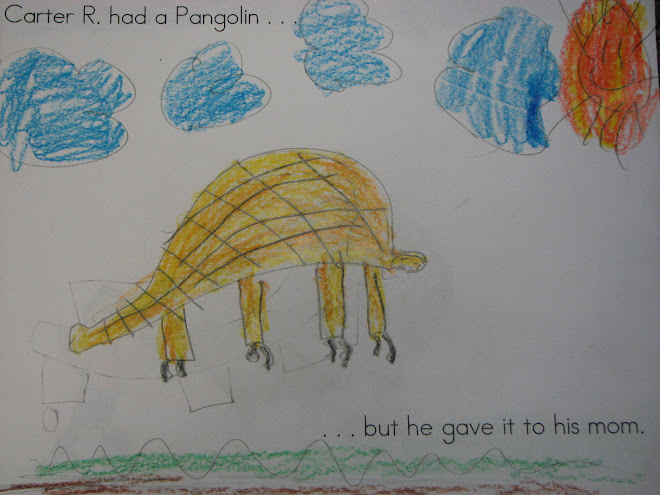

Name: Jamie L. Marstein Date: Friday, November 20, 2009
Subject: Science Grade Level: 1st Grade Approximate Time: 20 minutes
Title: Create a Critter
Standard(s):
Science K-12
Life Science
a. Heredity: The student will understand their variation among individuals of one kind with in a population. 1. The students will describe ways in which many plants and animals closely resemble but are not identical to their parents. 2. The student will match adult animals and plants with their offspring.
Objectives: (Students will)
1) Describe ways in which many animals closely resemble each other
2) Identify major parts of the body including, but not limited to eyes, nose, heart, skin, arms, legs, and muscles.
3) Follow multiple step directions with success
Materials:Pencil/ Crayons
1/2 sheet of drawing paper
Anticipatory Set or Motivation: Demonstrate on the whiteboard different types of eyes, ears, noses, and mouths, then say tell the students that their job is to create an animal that his never been see before. Show them some rough sketches as examples of animals that borrow body parts from other animals.
Procedure:1. Fold their half sheet of paper in short increments alternate back and forth from front to back.
2. In the first section: the will draw something for the top of their creatures head whether ears, hair, antennas, or horns
3. Second they will make a face shape complete with eyes, nose, and mouth and potentially ears if not already given.
4. Third they will make a body shape, but they must first decide whether or not their creature will stand up right or resemble a cat or a dog, which are across instead of up and down.
5. Lastly they will have to decide whether or not their creature has 0-4 legs.
Assessment: (Students will)
Develop an illustration that contains multiple body parts including but not limited to eyes, nose, heart, skin, arms, legs, etc...
Begin their illustrations with pencil and embellished them with crayons.
Construct illustrations that bear partial resemblance to an animal already in existence.



